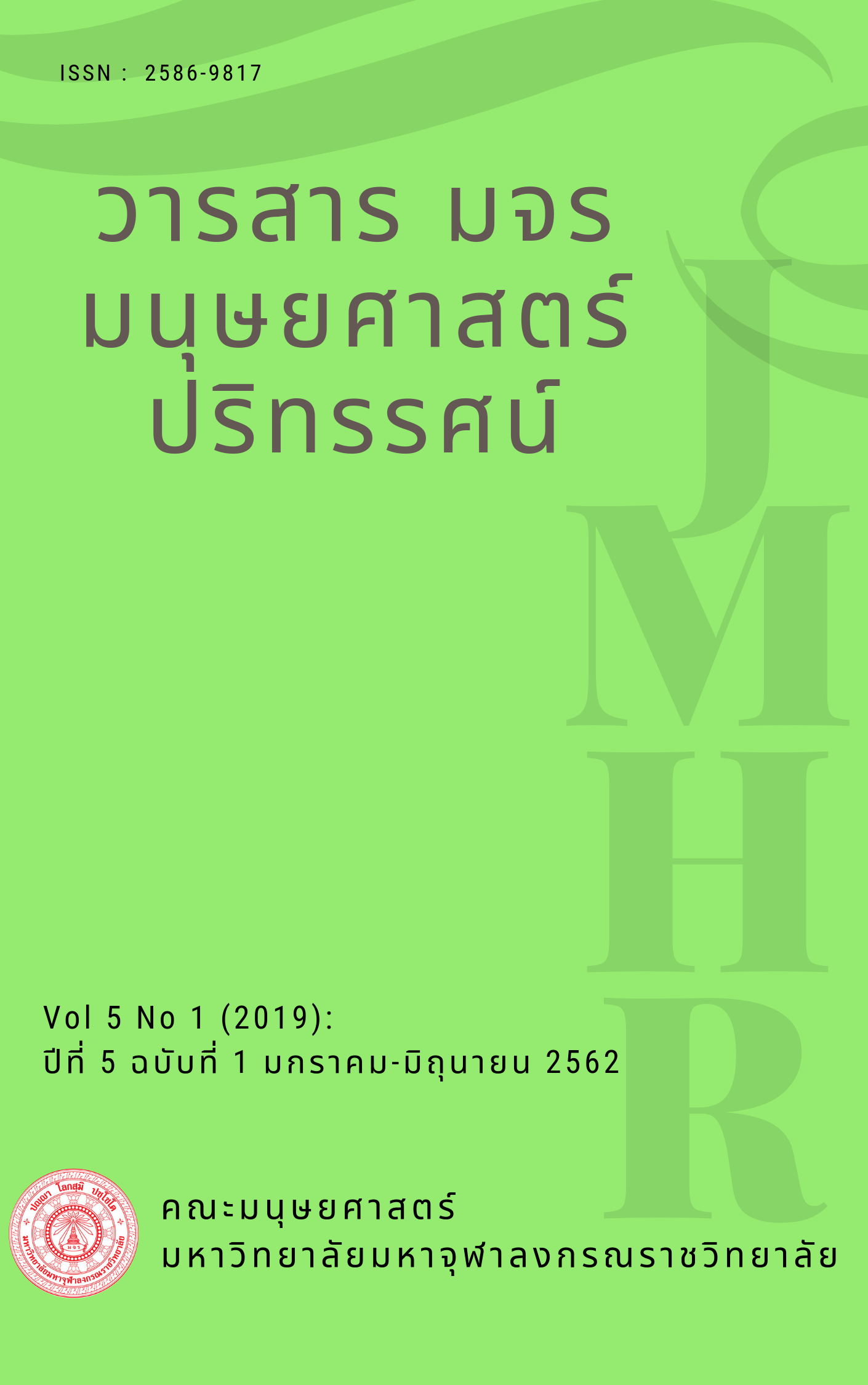The Tourism Area in Buddhist Temples : Wat Rongkhun and Wat Huayplakang.
Keywords:
Wat Rongkhun, Wat huayplakang, Tourism area in Buddhist temples.Abstract
This article, The Tourism Area in Buddhist Temples : Wat Rongkhun and Wat Huayplakang, has objectives to provide the context and to organize tourism in Wat Rongkhung and Wat Huayplakang. Wat Rongkhun is an ancient temple of Rongkhun village, 13 kilometers south of Chiang Rai. Chaloemchai Kositpipat is a famous artist in the village. In B.E. 2540, he had three ideologies to build Wat Rongkhun, including, to create as a Buddhist shrine, to create as a national treasure, and to create as the fine art of King Bhumibol Adulyadej (the 9th king). While, Wat Huayplakang is a long abandoned temple, a hillside area 15 kilometers northwest of the city. In B.E. 2548, PhraPobchok Tissawongso began construction. The ideology is to be the center of the Buddhist mind. It is a temple with Mahayana Buddhist concept.
There are 5 places in Wat Rongkhun and 2 places in Wat Huayplakang as the tourism area. Both temples have organized the tourism area based on the 7 Sappaya Principle with the same and different concepts. Wat Rongkhun was built with the introduction of lay people, while, Wat Huayplakang was built with the introduction of the monks. Both temples give a different sense of travel. Wat Huoyplakang has more atmosphere of the temple than Wat Rongkhun. However, both temples are a popular tourist attraction in Chiang Rai.
References
การท่องเที่ยวแห่งประเทศไทย, “เชียงราย แต้ แต้”, ไทยโพสต์ (13 พฤษภาคม 2561), น.พิเศษ.
พระพรหมคุณาภรณ์ (ป.อ. ปยุตฺโต). พจนานุกรรมพุทธศาสตร์ ฉบับประมวลศัพท์. พิมพ์ครั้งที่ 19. กรุงเทพฯ:
โรงพิมพ์พระพุทธศาสนาของธรรมสภา, 2556.
มัลลิกา ภูมะธนและคณะ. แนวคิดการจัดการท่องเที่ยว (วัด) ในพระพุทธศาสนา:หลักการและวิถีปฏิบัติ.
วารสารมจร.มนุษยศาสตร์ปริทัศน์. (ปีที่ 2 ฉบับที่ 2 กรกฎาคม – ธันวาคม, 2559), หน้า 43.
สุดแดน วิสุทธิลักษณ์. องค์ความรู้ว่าด้วยการท่องเที่ยวเชิงสร้างสรรค์:คู่มือและแนวทางปกฺบัติ,
คณะสังคมวิทยามานุษยวิทยา มหาวิทยาลัยธรรมศษสตร์, 2558.
10 ประเทศเป็นมิตรที่สุดในโลกจากการโหวตของนักเดินทาง (ออนไลน์) แหล่งที่มา
https://www.tieweng.com/top-friendliest-people-in-the-world/ (8 ธ.ค. 2561).
การสร้างวัดร่องขุ่น (ออนไลน์) แหล่งที่มา https://www.วัดร่องขุ่น.com (8 ธ.ค. 2561).
Jesper Kunde. อยากดังต้องโดดเด่น. แปลโดย ดนัย จันทร์เจ้าฉาย. พิมพ์ครั้งที่ 5. กรุงเทพฯ: เพียร์สัน เอ็นดูเคชั่น
อินโดไชน่า 2547.


